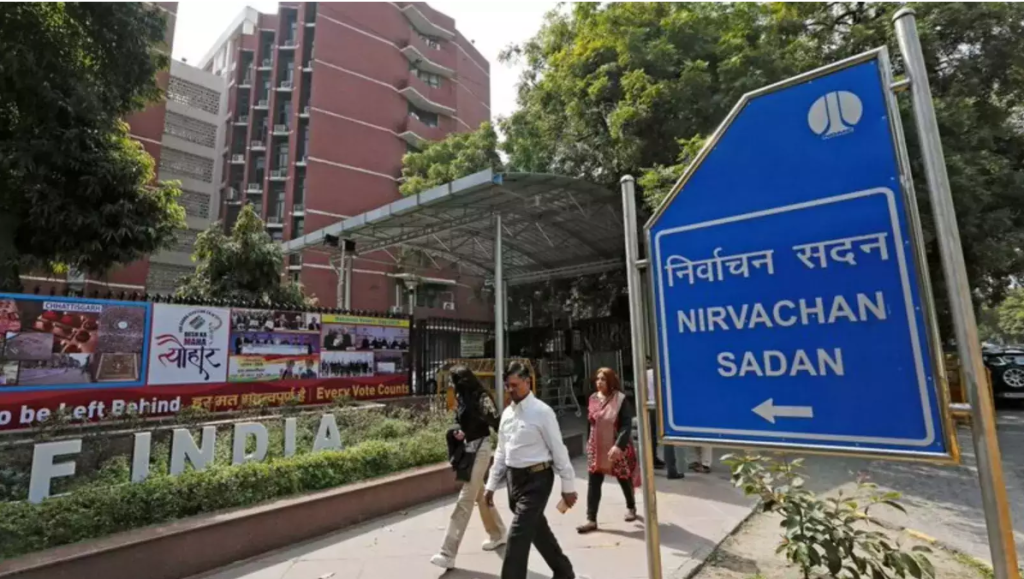Research shows frequent polls are bad for India, but democracies need checks and balances. One way out would be not-so-simultaneous polls
Holding simultaneous central and state elections could raise GDP by as much as 1.5% (a whopping Rs 4.5 trillion) in the year after the election. So says an academic paper by former Finance Commission chief NK Singh and IMF economist Prachi Mishra after comparing growth before and after elections in two groups of states — those whose elections coincided with (or were close to) national elections, and non-simultaneous states.
This is a serious academic exercise, not a concocted pre-election stunt. Many economists may contest the methodology and, hence, outcomes. The predicted gain of as much as 1.5% of GDP should be treated with caution. Yet you do not need to be an economist to realise that constant state elections every few months entail not only much spending on election logistics but also disruption of economic activity and decision-making by business people, politicians, and bureaucrats. The Model Code of Conduct of the Election Commission prohibits new schemes and policies after election schedules are notified, slowing activity for weeks.
Estimating the contribution of elections to inflation is hazardous when so many other factors (global food and oil prices, for instance) are at play. The study estimates that inflation tends to fall after both simultaneous and non-simultaneous elections, but the decline is 1% more after simultaneous elections.
Surprisingly, the study finds that fiscal deficits and government spending are bigger after simultaneous than non-simultaneous than before elections. But the proportion of spending of productive capital spending is higher after simultaneous elections by as much as 17.7 percentage points, consistent with the finding of higher growth. Business investment is also higher, so gross fixed capital investment, covering private and public actors, is higher by 0.5% of GDP after simultaneous elections.
Teachers oversee conducting elections at the grassroots, so multiple election schedules mean more teacher absenteeism. The study finds that school enrolment is 0.5% more after simultaneous than non-simultaneous elections. Crime goes up before both types of elections, but rise in crime is lower for simultaneous elections. Less goonda power is needed.
In sum, on a wide variety of counts, the paper confirms what ordinary mortals already know — that constant elections several times a year are bad for India. However, it is dangerous to extrapolate too much from such a limited exercise. You may ask, if simultaneous and, hence, far fewer elections improve growth, reduce inflation, improve teaching, and reduce crime, why not do away with elections altogether to enjoy even faster GDP growth with lower inflation, crime, and much greater certainty and continuity in business and government decisions? Can we conclude that elections waste time and money and hurt economic prosperity? No, international comparisons show that on balance, democracies fare better than autocracies because of checks and balances. Without such checks, an autocracy may fare well for many years, but will ultimately come a cropper unless it democratises to allow the healthy influence of dissent, which is essential for human rights and public participation.
The Kovind Committee wants simultaneous elections once in five years. If any government falls in between, the subsequent mid-term election will elect a new government only for the remaining part of the original five-year term. This will keep elections simultaneous.
Opposition parties and other critics complain that simultaneous polls would be an attack on federalism and fairness. That is plain wrong. Their real worry is that Modi’s popularity would aid the BJP in state elections if these were held with a general election. That is a narrow partisan objection to much-needed electoral reform.
Central and state elections were simultaneous in India in 1952, 1957, 1962 and 1967. Only subsequently did defections topple governments to produce different election dates for different states. India was a perfectly good federal state with strengthening institutions between 1952 and 1967. Many well-governed nations have simultaneous elections such as Sweden and Belgium.
I prefer simultaneous elections for Parliament and local bodies once in five years, and simultaneous elections in all states halfway through the parliamentary term. This will end the current malaise of elections every few months and ensure a fixed five-year term at all levels. It will improve political accountability every two and a half years by revealing changes in the public mood and aspirations. The US has a fixed term for the presidency and some congressional seats, but also has major mid-term congressional elections, and these are healthy for politics.
The other badly needed but totally ignored electoral reform is a two-term limit for every CM or PM. This will end the hold of charismatic individuals and political dynasties and facilitate a far wider range of leaders. Alas, this is the one reform that no party leader advocates out of narrow self-interest.
This article was originally published by The Times of India on March 16, 2024.


